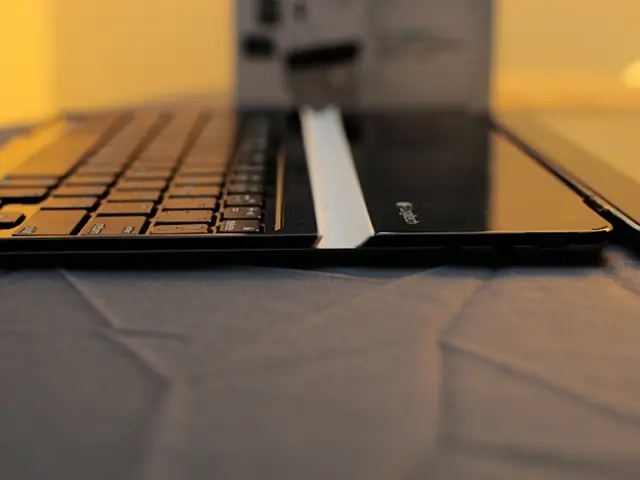Nigerian Parent's Handbook on Using Baby Slings
Nigerian parents have a variety of options when it comes to baby carriers, each with its unique advantages and disadvantages. The choice between traditional and modern baby carriers is shaped by cultural, practical, and ergonomic factors.
Traditional Baby Carriers
Traditional carriers, such as Ethiopia’s Ankelba, hold a significant cultural significance for many Nigerian parents. These carriers symbolise motherhood, social status, and heritage, connecting the wearer to their cultural roots and communal values. They are practical for everyday tasks like grinding grain and walking long distances, allowing mothers to keep their babies secure at their backs. Materials like oxskin leather used in traditional carriers are sturdy and long-lasting, suitable for various environments encountered in Nigerian rural life.
However, traditional carriers may not provide optimal support for the baby’s developing spine and hips, potentially lacking ergonomic features that modern designs offer. They are often fixed in design, making it difficult to accommodate different baby sizes or provide multiple carrying positions. Additionally, materials like leather can be heavy or uncomfortable in hot climates, which can be a drawback in Nigeria’s warm temperatures.
Modern Baby Carriers
Modern carriers, such as ergonomic wraps, ring slings, or soft-structured carriers, offer enhanced ergonomics and comfort that better support infant health. They provide head, neck, and spine support designed especially for newborns’ delicate development. Modern carriers often allow multiple carrying positions (inward-facing or outward-facing) tailored to the baby’s age and development stage. They typically accommodate newborns to toddlers and different body types.
Made with breathable fabrics, modern carriers are designed for comfort in various climates, potentially more suitable for Nigeria’s heat. However, modern ergonomic baby carriers can be considerably more expensive than traditional options, which could be a barrier for some Nigerian families. In some Nigerian regions, modern carriers might be less accessible than traditional ones. Some types of carriers, such as wraps or ring slings, may require practice to use safely and correctly.
Comparison Table
| Aspect | Traditional Baby Carriers | Modern Baby Carriers | |----------------------|------------------------------------------------|-------------------------------------------------| | Cultural Role | Strong cultural symbolism and identity[3] | More functional, less symbolic | | Ergonomics | Limited ergonomic support for baby[1] | Ergonomic, designed for spinal and hip health[1]| | Comfort & Weight | May be heavy, less breathable[3] | Lightweight and breathable fabrics[1] | | Adjustability | Usually fixed design | Highly adjustable to baby and parent size[1] | | Cost | Often less costly | More expensive | | Availability | Widely available locally | May be limited, especially outside urban areas | | Practical Use | Great for hands-free work in rural settings[3][4]| Good for urban mobility and newborn care[1][4] |
Nigerian parents might choose traditional carriers for cultural connection and durability, especially in rural contexts, while modern carriers offer enhanced ergonomics and comfort that better support infant health and urban lifestyles.
When selecting a baby carrier, parents should ensure the carrier provides adequate support to the baby's back, especially for younger infants. The baby should be positioned in an upright position with their face visible and close enough to kiss. Parents should be cautious with activities that may risk the baby's safety, such as cooking or riding a bike. Baby carriers promote bonding between parents and babies.
Modern baby carriers offer more features and design options, including wrap carriers, ring slings, and soft-structured carriers. Choose carriers with adjustable straps and buckles that are easy to use and won't loosen over time. Tips for maintaining baby's safety and comfort while using a carrier include monitoring the baby's temperature by being mindful of the baby's temperature and dressing them appropriately for the weather. Ensure that the carrier provides proper ventilation to keep your baby cool and comfortable.
Baby carriers are essential for Nigerian parents, providing convenience, comfort, and a safe environment for infants. Choose carriers with sturdy buckles, straps, and closures that won't accidentally come undone. Baby carriers come in various styles and designs, including wrap carriers, ring slings, soft-structured carriers, and mei tais. Traditional baby carriers, like wrappers and slings, are simple, easy to use, and provide a close bond between parent and baby.
Engage in proper babywearing techniques by educating yourself about different carrying positions and practice proper babywearing techniques. Always check that you can see your baby's face and regularly monitor their well-being. Baby carriers allow parents to move around easily, ensuring a seamless transition between different activities. Be aware of your surroundings by staying vigilant and being cautious of potential hazards or obstacles while wearing the baby. Take breaks if using a carrier for an extended period, to give the baby and yourself some relief.
Safety features should always be prioritised when selecting a carrier. Parents can have their hands free to perform other tasks while keeping their little ones close. Baby carriers are ergonomically designed, distributing the weight evenly and preventing strain on the parent's body. Guidelines for using a baby carrier safely include selecting a baby carrier that is suitable for your baby's age, weight, and developmental stage. Carefully read and understand the manufacturer's instructions before using the baby carrier.
Some carriers allow for front, back, and hip carrying positions, providing flexibility as your baby grows. Read reviews and check safety certifications to ensure the carrier meets international safety standards. Listen to your baby by paying attention to your baby's cues and signals, and respond promptly to their needs. Always monitor your baby's breathing and ensure their airway is clear, especially for newborns. Ensure that the carrier has a secure harness system to prevent your baby from slipping out. Ensure all buckles, snaps, and straps are securely fastened to prevent any accidents or falls.
When selecting a baby carrier, consider factors such as the baby's age and weight, the parent's comfort, and the correct size and fit. Check for any discomfort by regularly checking for signs of discomfort, such as red marks or fussiness, and adjust the carrier if needed.
- Traditional baby carriers, like the Ankelba from Ethiopia, carry significant cultural significance for many Nigerian parents.
- These traditional carriers offer practical advantages for everyday tasks in rural settings, yet they may lack optimal ergonomic support for a baby's developing spine and hips.
- Modern baby carriers, such as ergonomic wraps, ring slings, or soft-structured carriers, provide enhanced ergonomics designed for a newborn's delicate development.
- Safety should always be prioritized when selecting a carrier, ensuring it provides adequate support for the baby's back and an upright position with the baby's face visible.
- Modern baby carriers, with their adjustable straps and breathable fabrics, are more suitable for Nigeria's warm temperatures compared to traditional carriers made from heavier materials.
- Parents might consider baby carriers as essential for their family, helping promote a close bond between parent and baby while offering convenience in both urban and rural environments.
- Education on proper babywearing techniques is crucial to ensure a safe and comfortable carrying experience, taking into account factors such as different carrying positions and the baby's cues.
- By selecting carriers with safety features, parents can have their hands free to perform other tasks, while ensuring the carrier meets international safety standards and fits the baby's age, weight, and developmental stage.








